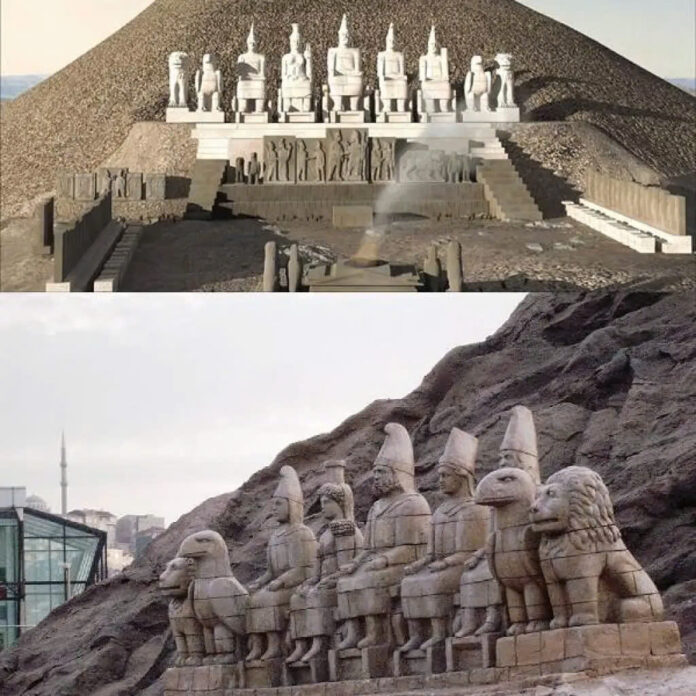A Glimpse into Ancient Glory

Nestled on the stunning slopes of Mount Nemrut in Adıyaman, Turkey, the Hierothesion stands as a testament to the rich cultural tapestry of the ancient Kingdom of Commagene. This UNESCO World Heritage site, dating back to the 1st century BCE, was commissioned by King Antiochus I as a grand funerary monument and sanctuary, blending artistic influences from Greece, Persia, and Anatolia into an extraordinary architectural marvel.
The Colossal Statues: A Cultural Synthesis
Among the most striking features of the Hierothesion are the enormous statues adorning its three terraces. Each terrace showcases a unique blend of deities and symbols revered by the diverse cultures that once thrived in this region. On the eastern terrace, visitors are greeted by magnificent representations of Greek gods Apollo and Zeus, reflecting the Hellenistic influences within the Commagene court. Alongside these figures, intricately carved depictions of the Persian sun god Mithra and King Antiochus I himself illustrate the deep-rooted connections to Persian cultural traditions.

The western terrace features equally impressive statues, including the goddess Tyche, who personifies the city’s fortune, and the mythical “Lion Horoscope,” a symbol intertwining Anatolian and Mesopotamian iconography. Some of these monumental sculptures reach heights of up to 10 meters, showcasing the exceptional skill of Commagene artisans.
An Astronomical Legacy
The deliberate arrangement of these colossal figures, all oriented towards the eastern horizon, suggests significant astronomical and astrological importance to the ancient inhabitants of Hierothesion. Perched atop Mount Nemrut at 2,150 meters, the site offers unobstructed views of celestial movements, enhancing its aura of mystique and divine connection.
Modern Explorations and Discoveries

In contemporary times, the Hierothesion has garnered significant academic and public interest. Researchers and historians are diligently working to unravel the intricate layers of meaning and symbolism woven into its architecture and art. Utilizing advanced digital technologies, they have produced stunning graphic recreations and virtual reconstructions, allowing visitors worldwide to experience the grandeur of Hierothesion in vivid detail, even as the physical site endures the test of time.
A Lasting Legacy
Through these innovative visualizations, the ambitious vision of King Antiochus I for the Hierothesion becomes increasingly clear. The striking contrast between colossal statues, elaborate bas-reliefs, and thoughtfully designed sacred spaces offers a captivating glimpse into a monarch committed to fostering a unique cultural identity for his kingdom, drawing from the rich heritage of Greco-Roman, Persian, and Anatolian traditions.

Today, the Hierothesion on Mount Nemrut remains a powerful reminder of cultural exchange and the enduring legacy of ancient civilizations. Its imposing presence serves as a poignant testament that, even amidst political and social turmoil, humanity can express itself through monumental art and architecture, continuing to inspire future generations.

